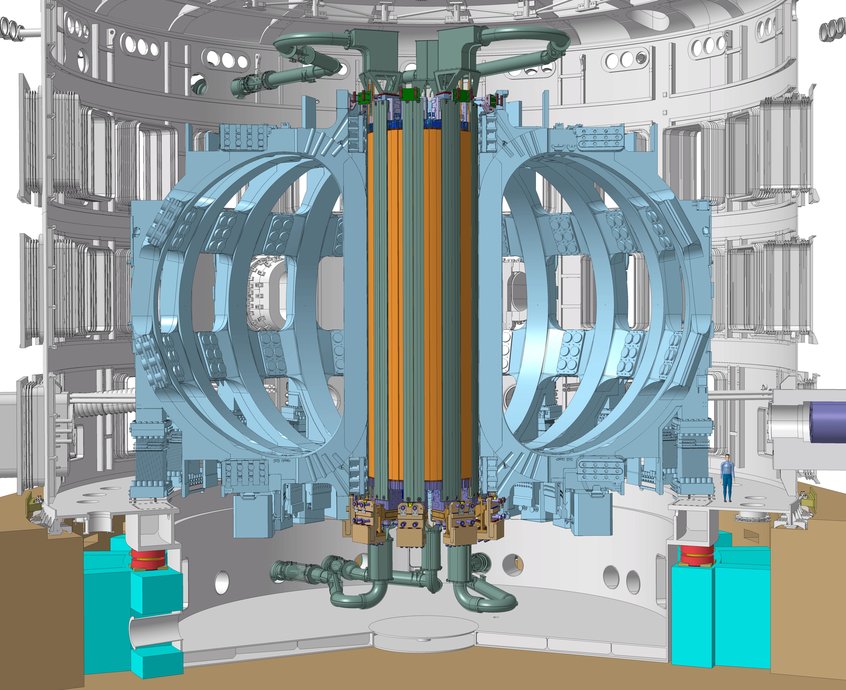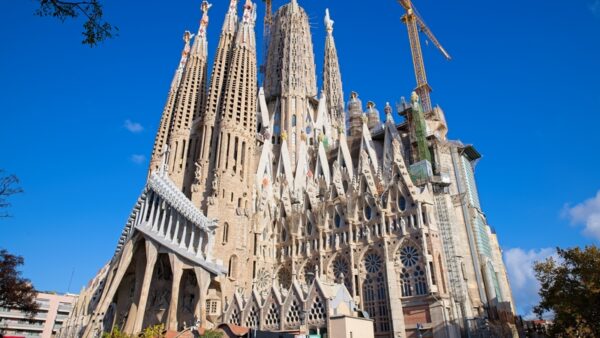US nuclear engineer General Atomics (GA) has begun work on the world’s biggest electromagnet for the world’s largest nuclear fusion reactor, a $16bn project underway in France.Â
The San Diego-based company announced earlier this month that it had begun fabricating the magnet’s central solenoid, a 1,000 tonne cylinder that is 18m high with a diameter of 4m. Â
When finished, the magnet will be powerful enough to lift an aircraft carrier out of the sea.Â
GA will manufacture the magnet in the form of modules containing 6.4km of superconducting niobium-tin, which was manufactured in Japan.
The process of winding the magnet’s coils is expected to be complete in 2017.
If the design is successful, the reactor is expected to produce 500MW of power from an input of only 50MW, offering the prospect of low carbon nuclear energy–
“Fabrication will require unprecedented engineering and scientific advancements to assemble the technology into a new clean energy source,” the company said in a statement.Â
The magnet is due to be delivered in 2019 to the reactor site in Cadarache, north of Marseille. Â
The project is known by the acronym “Iter”, which stands for the International Thermonuclear Experimental Reactor, and is also Latin for “the way”.  Â
Management and funding for the project is being provided by China, the EU, India, Japan, South Korea and the US, with Europe providing 45% of the cost and the other members 9% each.Â
Ned Sauthoff, the US’s project manager for the fusion reactor, said: “The central solenoid represents the heartbeat of Iter, because it pulses the magnets that drive electric current through the tokamak plasma.” Â
Constructing the siteÂ
Work on building the reactor and its auxiliary buildings began in 2013. Â
The contractor for the work is a French-Spanish joint venture between Vinci, Ferrovial and Razel-Bec, which has a $250m programme of works including the construction of 11 buildings and storage areas on a 42ha site. Â
UK engineer Atkins is leading the Engage consortium that is undertaking the design of the civil engineering works. Other members are Assystem, Egis and Empresarios Agrupados.Â
How it worksÂ
Nuclear fusion works by colliding atoms together at high energies to form larger nuclei. Unlike nuclear fission, the greatest energy is obtained by fusing small atoms, such as hydrogen. Â
The Iter reactor is of the tokamak-type design that was invented in the Soviet Union in the 1950s. Â
This will use the magnetic field generated by the GA magnet to confine a quantity of plasma within a toroidal vessel. Â
One of the many technical challenges to be overcome involves creating two patterns of magnetic force in such a way that the plasma is stabilised by electromagnetic force alone, as no vessel wall would be able to withstand the temperature.

A design image of the solenoid at the heart of the fusion reactor
The aim of the reactor is not to produce electricity, however, but just to demonstrate that a self-sustaining plasma can be maintained in a steady state.Â
If the design is successful, the reactor is expected to produce 500MW of power from an input of only 50MW, thereby offering the prospect of low carbon nuclear energy.Â
The facility is expected to be fully operational in 2027.Â
Photograph: The site in Cadarache, southern France in April 2015 (Source: Iter)










